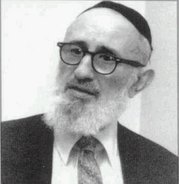The Kosher Bookworm: The Rav on Teshuva
Teshuva and Yomim Noraim, The Noraos Harav (vol. 16)
Suggested reading for Yom Kippur
Reviewed by Alan Jay Gerber
Issue of Oct. 3, 2008
As we are now in the midst of the yemei ratzon with Yom Kippur just around the corner, I would like to bring to your attention a new book of divrei Torah from one of the greatest talmudic scholars of the 20th century, Rabbi Joseph B. Soloveitchik, zt”l.
Entitled “Teshuva and Yomim Noraim” and edited by B. David Schreiber of Lawrence, this new volume contains three drashot delivered in 1965, 1966 and 1972. The first two were originally given in Yiddish, and the third is a reconstruction of an English shiur. Taken together, they make for some fascinating reading and deal with several timely themes.
The first, “Teshuva and Bechirah,” presents the various views on how our faith deals with freedom of will, absolution from sin, a person’s cognitive ability and his mental capacity, and what constitutes regret as a process in repentance as well as the element of introspection in this process.
The second drasha, “Teshuva and Torah,” deals with themes that examine the origin and scope of teshuva, especially as it relates to the Talmud and related works. Here, the Rav provides an analysis of what constitutes the commission of sin and the defilement that follows this sinful conduct.
Among the chiddushim presented is the Rav’s perspective on the uniqueness of the second set of luchos which he presents here as having constituted a bris of Torah shebe’al peh, the oral legal tradition in Judaism. Herein is cited an extensive citation from the Beis Levi, both in the text and highlighted further in the accompanying footnotes.
The last shiur, entitled “Yom Kippur and Creation,” analyzes the following four themes, each of which is presented as a separate subsection of this essay:
— The role of Yom Kippur in facilitating the creation and in enabling humanity to recapture its primordial kedusha.
— G-d’s rulership over humanity’s faculties, the forfeiture of a sinner’s ability to use those talents and the penalty which the sinner must pay to gain back those lost rights.
— A person’s dual components of spirituality and physicality, and G-d’s rulership over both components.
— G-d’s ultimate judgment of humanity, from his perspective of eternity.
Of particular note in this last shiur is the reference to the Rav’s take on sin being a reality which distorts the human personality. The Rav insists that we as Jews have to take the capacity and duty to repent at this time of year seriously and literally. Sin has to be regarded as a metaphysical reality and not just an error in judgment.
The Rav illustrates this with a most unusual example. Joseph Stalin was, by most estimates, one of history’s cruelest dictators –– something to be expected from communism, but he even topped those expectations. After his demise, those who succeeded him tried to distance themselves from some of his excesses by doing their form of teshuva. The Rav cited the famous example of Soviet leader Khrushchev’s offered “confession” on behalf of Stalin, three years after his passing.
“In that confession, Khrushchev never mentioned the word sin. He related how Stalin had executed hundreds of thousands of innocent people. But he never employed the word ‘sin.’ He used a substitute word. He wrote that Stalin had committed an ‘error.’ There is a substantive difference between error and sin. Error is a practical mistake; sin, on the other hand, is a theological metaphysical reality. Sin has an adverse negative impact upon the spiritual personality, defiling, crippling and distorting it.”
This is the essence of the Rav’s take on the subject of sin and teshuva, which is an important lesson for all of us to learn and practice.
The Rav continues with this shitah, elaborating further on this theme and reinforcing his concepts of what constitutes true and meaningful teshuva. Utilizing such an evil example as Stalin and his communist ideology puts a face upon the Rav’s thesis, giving it greater credibility that would otherwise have been manifest without it. For this alone we should be thankful to Rabbi Soloveitchik for the legacy of his version of an effective mode of teshuva for us at this time of year. The concept of teshuva permeates much of the Rav’s writings and the shiurim presented here are among the latest to be set in print for all to learn from.
This sefer brings us to Volume 16 in the Noraos HaRav series, and translator B. David Schreiber should be commended for having brought forward these quality Torah seforim for our enrichment.
I do hope that you will have the chance to buy this and the other volumes in this series. They are highly readable and a source of some inspiring divrei Torah.
The Kosher Bookworm would like to wish one and all a Gmar Chasima Tova and a joyous Succos.

 47.0°,
Fair
47.0°,
Fair 




